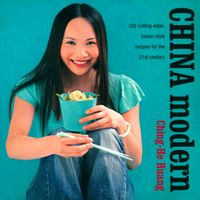Advertisement
Traditional Home Cooking
Appears in
Published 2006
Traditional or home-style Chinese cooking is at the other end of the scale from takeout favorites. These were the type of dishes of my childhood: Zong-zi, Vegetable Bao, Cockles and Ginger Soup, Steamed Cod with Salted Black Beans and more. It’s my theory that modern Chinese food will be brought to the world’s attention by tweaking the nation’s traditional dishes and making them more cutting edge, using better, healthier local ingredients.
Chinese cooking is traditionally based on Chinese medicine and the philosophy behind our cuisine is about health and balance. These values echo the principles of yin and yang: we balance these forces by nourishing the body with foods that are ‘cooling’ and others that are ‘heat-giving’. The Chinese dietary tradition focuses on eating to harmonize with the season. So in autumn we prepare the body for the cold months and provide fuel by eating grains, nuts, seeds and squash. In winter most meat, nourishing soups and congee are served. In spring cooling foods such as leafy greens and sprouts rejuvenate the body, while in summer citrus fruits, melons, leafy greens, mung and soy beans are a must. The cooking technique of food also contributes a cooling or heat-giving quality. For example, steaming, boiling and stir frying are ‘neutral’, salads are cooling while braising and deep frying are ‘heat giving’. However, ingredients are key too, because you can warm the food by adding heat-inducing garlic, ginger or chilies.

